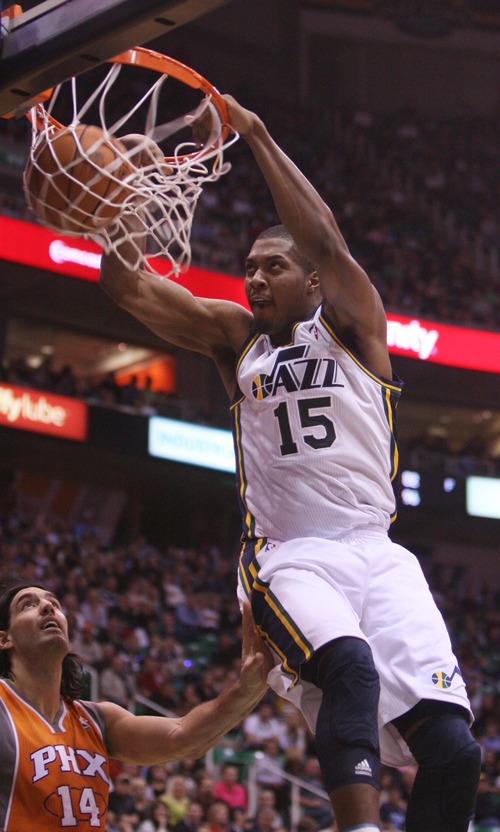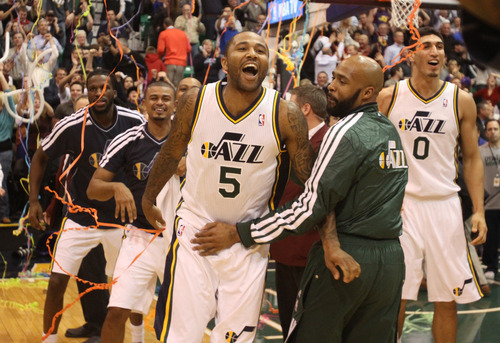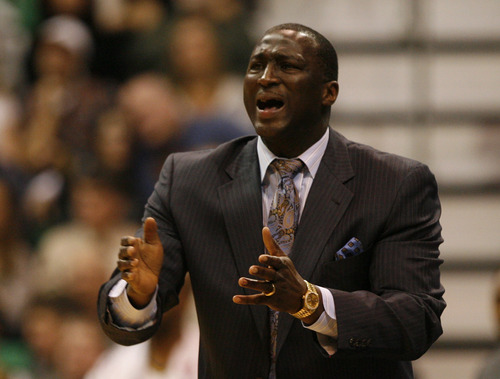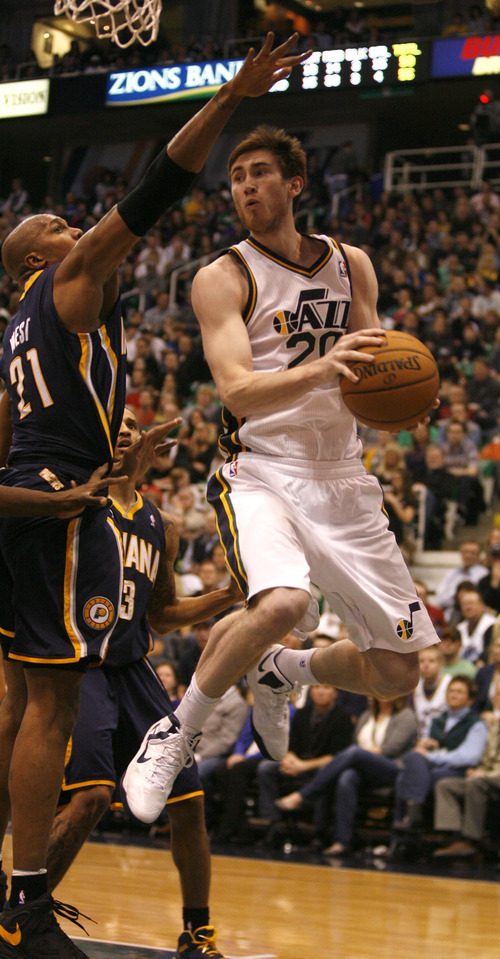This is an archived article that was published on sltrib.com in 2013, and information in the article may be outdated. It is provided only for personal research purposes and may not be reprinted.
If the Jazz make a trade that radically alters their lineup and their outlook for what's left of this season, then I'll become like Emily Litella, the old "Saturday Night Live" character whose rants stemmed from her misinterpreted or outdated information.
Oh, never mind.
Certainly, just about anything — or nothing — could happen between now and Thursday afternoon's NBA trade deadline, affecting the Jazz's standards for the remaining one-third of the 2012-13 schedule. But assuming the team basically remains intact, here's what I'd like to see from the Jazz, beginning Tuesday against Golden State:
• Gordon Hayward's upward trend resuming
When he injured his shoulder in the late stages of a Jan. 26 win over Indiana, Hayward was averaging 14.5 points and shooting 47 percent from 3-point range in 12 January games.
In his third pro season, Hayward was playing with confidence and poise and showing signs of developing into an All-Star someday. He's eager to get back on the court, and the Jazz have missed his versatility.
• A true evaluation of Mo Williams
Remarkably, the Jazz have gone 16-10 since Dec. 22, when Williams injured his thumb at Miami. That's partly a function of an easier schedule, but it also is a tribute to the fill-in work of Jamaal Tinsley, Alec Burks and Earl Watson.
The Jazz may try to acquire a young point guard, which obviously would affect Williams' status with the team. If not, these two months will become critical as Jazz management judges Williams. He's only 30 years old, so he actually might qualify for the coveted title of "point guard of the future" in Jazzland. But who can say that right now, after he's played only 24 games this season?
• Improvement on the road
This one's obvious. Former coach Frank Layden always figured a .500 team should win one-third of its road games and two-thirds of its home games. By that accounting method, a 20-6 home record makes the Jazz (30-24) much better than a .500-caliber club, but you would never know that by their 10-18 road mark.
With 15 home games and 13 road games remaining, the Jazz's current pace would give them between 15 and 17 more wins. A record of 46-36 would represent only a slight improvement from a full-season projection of their 36-30 mark from the lockout-shortened 2011-12 schedule.
If they're genuinely better than that, they have to prove it on the road.
• Fulfilling dual purposes
Again, this dynamic changes markedly if the Jazz trade Al Jefferson or Paul Millsap this week. Fans clamoring for more of Enes Kanter or Derrick Favors suddenly would get all they want of one of those guys, for better or worse.
Otherwise, coach Tyrone Corbin would continue his dual mission of competing for a decent playoff seed while trying to bring the young guys along. Corbin is doing a good job of balancing those interests, which is tricky.
• Performing in the postseason
Even if a major trade significantly helps or hurts their current lineup, the Jazz are pretty much locked into one of the last three playoff spots in the Western Conference. They really would have to crumble to miss the playoffs altogether and they need a huge surge to crack the top five.
So that means they'll face San Antonio, Oklahoma City or the Los Angeles Clippers in the first round, creating the prospect of being swept again. But the Jazz have grown beyond that level. They've defeated the Spurs and Thunder at home this season and could have beaten the Clippers twice, so they should not be intimidated by those teams — regardless of who's wearing a Jazz uniform in April.
Twitter: @tribkurt











